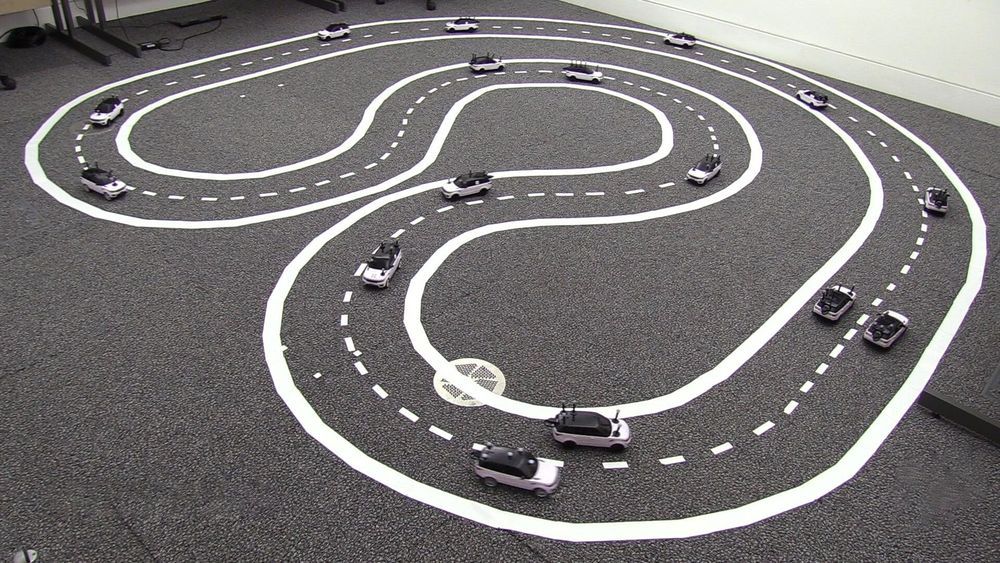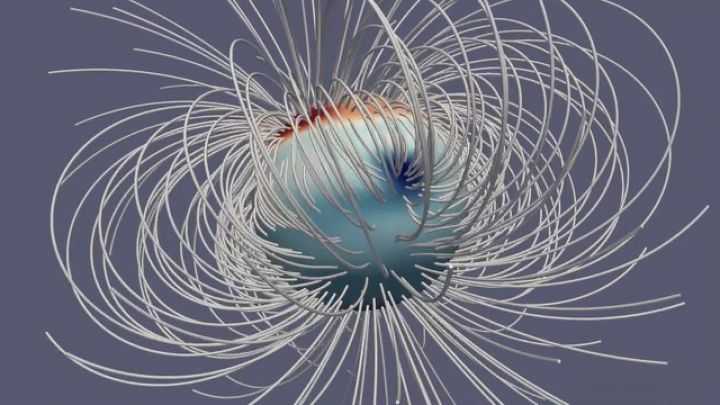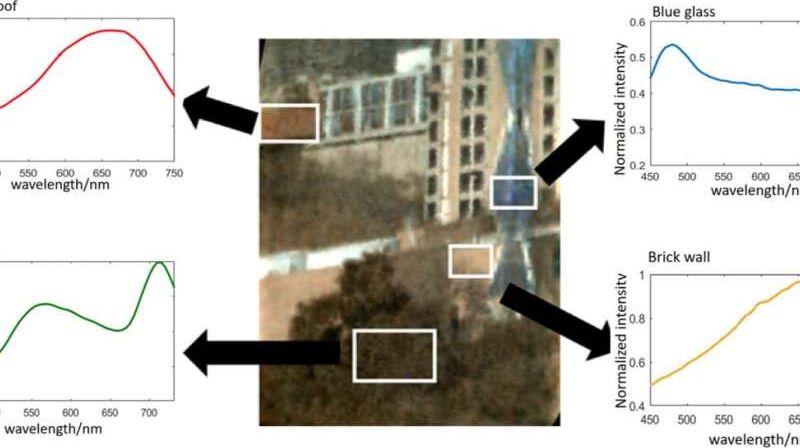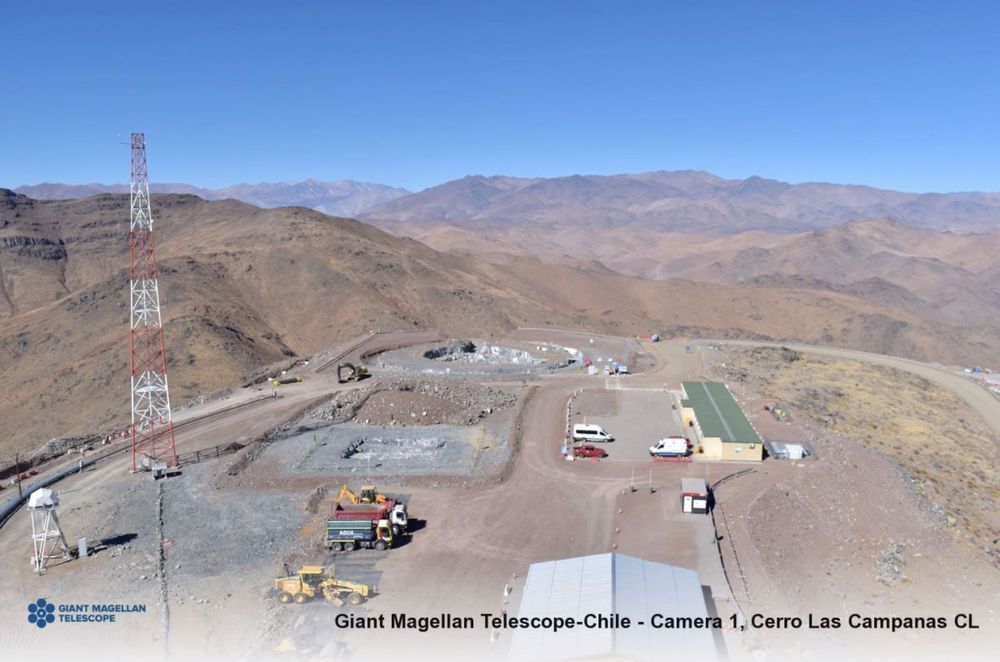The new technology could be used for the development of effective and time-sensitive search-and-rescue robots.
Get the latest international news and world events from around the world.

Driverless cars working together can speed up traffic
A fleet of driverless cars working together to keep traffic moving smoothly can improve overall traffic flow by at least 35 percent, researchers have shown.
The researchers, from the University of Cambridge, programmed a small fleet of miniature robotic cars to drive on a multi-lane track and observed how the traffic flow changed when one of the cars stopped.
When the cars were not driving cooperatively, any cars behind the stopped car had to stop or slow down and wait for a gap in the traffic, as would typically happen on a real road. A queue quickly formed behind the stopped car and overall traffic flow was slowed.

NASA’s Juno Finds Changes in Jupiter’s Magnetic Field
The discovery will help scientists further understand Jupiter’s interior structure — including atmospheric dynamics — as well as changes in Earth’s magnetic field. A paper on the discovery was published today in the journal Nature Astronomy.
“Secularvariation has been on the wish list of planetary scientists for decades,” said Scott Bolton, Juno principal investigator from the Southwest ResearchInstitute in San Antonio. “This discovery could only take place due toJuno’s extremely accurate science instruments and the unique nature of Juno’sorbit, which carries it low over the planet as it travels from pole to pole.”
Characterizing the magnetic field of a planetrequires close-up measurements. Juno scientists compared data from NASA’s pastmissions to Jupiter (Pioneer 10 and 11, Voyager 1 and Ulysses) to a new model ofJupiter’s magnetic field (called JRM09). The new model was based on datacollected during Juno’s first eight science passes of Jupiter using itsmagnetometer, an instrument capable of generating a detailed three-dimensionalmap of the magnetic field.

Juno finds changes in Jupiter’s magnetic field
NASA’s Juno mission to Jupiter made the first definitive detection beyond our world of an internal magnetic field that changes over time, a phenomenon called secular variation. Juno determined the gas giant’s secular variation is most likely driven by the planet’s deep atmospheric winds.
The discovery will help scientists further understand Jupiter’s interior structure—including atmospheric dynamics—as well as changes in Earth’s magnetic field. A paper on the discovery was published today in the journal Nature Astronomy.
“Secular variation has been on the wish list of planetary scientists for decades,” said Scott Bolton, Juno principal investigator from the Southwest Research Institute in San Antonio. “This discovery could only take place due to Juno’s extremely accurate science instruments and the unique nature of Juno’s orbit, which carries it low over the planet as it travels from pole to pole.”

Hyperspectral camera captures wealth of data in an instant
Standard snapshots from space don’t quite show Earth in all its glory. There’s so much more to see.
To reveal details impossible to observe with the naked eye, Rice University engineers are building a portable spectrometer that can be mounted on a small satellite, flown on an airplane or a drone or someday even held in the hand.
Bioengineer Tomasz Tkaczyk and his colleagues at Rice’s Brown School of Engineering and Wiess School of Natural Sciences have published the first results from a NASA-funded project to develop a small, sophisticated spectrometer with unusual versatility. Their paper appears in Optics Express.

A universal description of non-equilibrium colloid phase separation
Liquids, with their flowing dynamics, are often far from equilibrium. This makes it particularly hard to model processes in soft matter or living tissue, which contain liquids. New research from the University of Tokyo’s Institute of Industrial Science (IIS) offers an elegant approach to modeling the self-organization of out-of-equilibrium systems.
Such systems naturally try to self-organize into more stable states. Colloidal suspensions—homogeneous suspensions of undissolved particles in a liquid, which are widespread in nature—tend to separate out over time if colloids strongly attract with each other. A major difficulty in modeling this process is the complex dynamical interaction between colloids and liquid. The two components have very different dynamics that are hard to unite in a single model.
The IIS study, published in Nature Computational Materials, resolves this through an approach termed fluid particle dynamics (FPD). Instead of being treated as solids, the suspended colloid particles are simulated as undeformable highly viscous liquid droplets. This effectively makes the colloidal suspension a binary liquid mixture, and removes the need for complicated treatment of a solid-liquid boundary condition.

Is dark matter made of axions? Black holes may reveal the answer
What is dark matter made of? It’s one of the most perplexing questions of modern astronomy. We know that dark matter is out there, since we can see its obvious gravitational influence on everything from galaxies to the evolution of the entire universe, but we don’t know what it is. Our best guess is that it’s some sort of weird new particle that doesn’t like to talk to normal matter very often (otherwise, we would have seen it by now). One possibility is that it’s an exotic hypothetical kind of particle known as an axion, and a team of astronomers are using none other than black holes to try to get a glimpse into this strange new cosmic critter.
Axion Agenda
I’ll be honest with you, we don’t know if axions exist. They were invented to explain a conundrum in high-energy physics. There’s a certain kind of symmetry in nature in which switching out the electric charges of all particles in a random interaction and running the process in the mirror produces the exact same result. This is known as charge and parity symmetry, or CP-symmetry for short.

Biology and Physics on Station Today Promote Moon Mission Success in 2024
The Expedition 59 crew is exploring space’s long-term impacts on biology and physics today helping astronauts go to the Moon in 2024. #Moon2024
The six residents aboard the International Space Station kicked off the workweek today exploring microgravity’s long-term impacts on biology and physics. The Expedition 59 crew is also ramping up for a fourth spacewalk at the orbital lab this year.
NASA is planning to send men and women to the Moon in 2024 and life science on the station will help flight surgeons keep lunar astronauts healthy. The space physics research will also provide critical insights to engineers designing future spacecraft and habitats for exploration missions.
Several dozen mice and their immune systems, which are similar to humans, are being continuously observed in specialized habitats. Flight Engineer Anne McClain tended to the mice today cleaning cages and restocking food in Japan’s Kibo laboratory module. Doctors are testing the hypothesis the immune response decreases in space and exploring advanced vaccines and therapies benefiting both astronauts and Earthlings.